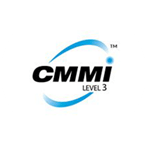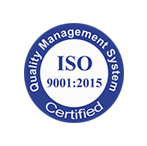Mixed Reality is a relatively new term in the world of simulation as the other two phenomenons – Virtual Reality and Augmented Reality – have made quite a name for themselves in the technical biz. Mixed Reality is the integration of virtual and real environments where both co-exist simultaneously. It can be also termed as ‘Hybrid Reality’ as it enables a user to experience the virtual and real environments at the same time frame seamlessly. However, a lot of people are confused regarding, “How Mixed Reality works?” So, here we have tried to explain the functioning of this technology.

The functioning of the Mixed Reality technology is based on certain technologies and factors such as Augmented Reality, Virtual Reality & space, and coordinates, respectively. Identical to HoloLens, MR technology takes the help of a projector in order to reflect pictures on semitransparent materials which will then be displayed to the human eye with the help of beam-splitting technology. Space and coordinates come handy in placing the virtual objects in the real world and whenever one approaches the virtual objects, they appear bigger and while one moves away, they become smaller.
Mixed Reality offers several benefits like the user can manipulate the virtual objects and even interact with them as if he/she is with them in the real world. The movement with the objects comes with several angles and perspectives. It is one of the foremost reasons why MR is getting such a huge response from the various businesses across the globe. Predominantly, industries like medicine, architecture and urban planning and education and training are some of the industries that have utilized this technology.
The most recent use of Mixed Reality was seen in sharing real-world virtual workstations. When a number of MR devices are used in a shared space, new collaboration options emerge. Mixed Reality enables various members of a team to interact in a shared virtual world overlaid in the physical world. Therefore, a connected atmosphere is developed where users join hands along with with working and mutual interaction though virtual objects in the real world. Image recognition and real-time mapping features of MR make this task possible.
The sales teams score the maximum advantage out of Mixed Reality as it enables the sharing of real-world virtual spaces while making a pitch for a new offer. Well, let us simplify by giving a common example: A pharmaceutical salesman carries a couple of MR devices for an appointment with the doctor. Both the doctor and the salesman wear the devices so that the latter can explain the former a model of a new drug that his company is introducing in the market. The sales representative is also able to explain the chemical composition of the drug through visualization and also simulate how the drug will move in the body to fight diseases.
You May Also Like:
Mixed Reality Real Estate
Conclusion: The salesman could have explained the new drug through pictures and videos in 2d format but then it wouldn’t have been possible to establish deeper connections with the doctor while the thoroughly detailed information in the 3d format regarding the product eradicated every iota of doubt.












